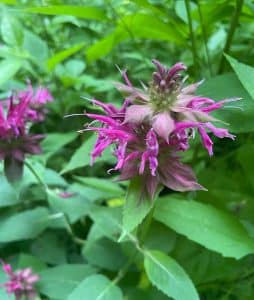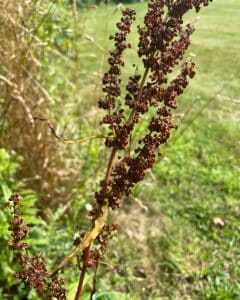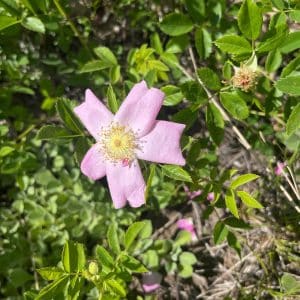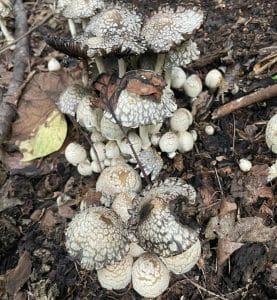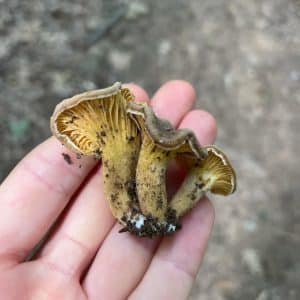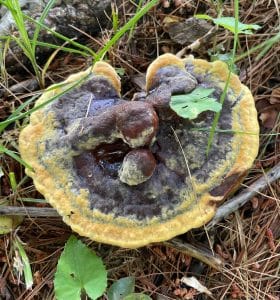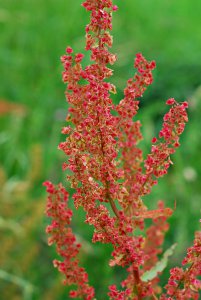
Introduction to Narrowleaf Dock
Narrowleaf dock is a species of flowering plant that is part of the knotweed family, known as Polygonaceae. This family is comprised of 1,200 species, 48 of which are known varieties of dock plants. In identification, narrowleaf dock is known by its’ scientific name Rumex stenophyllus. In your research and foraging adventures, you will also find that narrowleaf dock is referred to as field dock. Dock plants that are a part of the knotweed family are native to Eurasia, then later introduced to North America. States, where narrowleaf dock is most commonly found include Wyoming, Montana, Minnesota, both North and South Dakota, and Kansas.
Other varieties that are notable in foraging include yellow dock, western dock, yard dock, and wild rhubarb. Yellow dock, western dock, and yard dock are similar in appearance to field dock, so it would be useful to have at least two forms of identification for cross-reference, to ensure you are foraging the correct dock plant.
Identification of Narrowleaf Dock
Narrowleaf dock is a perennial found most often in neglected, moist habitats. The most common areas for narrowleaf dock to sprout and thrive include fields and roadsides. However, narrowleaf dock also grows best in saline soils, which are naturally high in salt content, so be sure to check areas such as ponds and salt marshes.
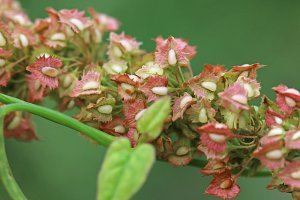
This variety of dock plant reaches an average height of 16 to 32 inches tall. Starting at the base, narrowleaf dock has a strong taproot, which reaches between 15 to 30 inches, or 40 to 80 centimeters, in length. This makes harvesting the plant increasingly difficult, as the root is the prime part that is most commonly used. The leaves reach an average length of 11 inches or 30 centimeters and often appear arrow or lance-shaped, with sharp teeth along the edges.
As seen in the photos provided, the flowering portions of narrowleaf dock are comprised of multiple clusters. These clusters are often made up of 20 to 25 flowers per cluster, in which a multitude of seeds can be found. The seeds are also labor-intensive to harvest, while also not exactly palatable, depending on who you ask. The best time to harvest any dock plants is during colder weather, as the timing of harvest affects the taste of the plant parts. So, the warmer the weather is at the time of harvest, the more bitter the plant will taste.
Uses of Narrowleaf Dock
Dock plants have been noted to be edible since the era of the Great Depression in the United States. These plants were increasingly popular during that time because of the plants’ tart taste. In terms of usability, narrowleaf dock is not commonly listed among the other dock plants for their usefulness. Instead, yellow (curled) dock is the most common dock plant to be mentioned. However, most dock plants are edible, including narrowleaf (field) dock, so be sure to take notes about the effects this variety has when in use.
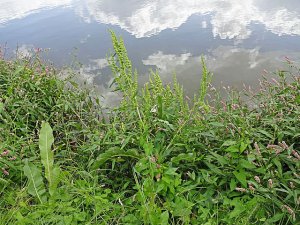
Dock plants are noted to be high in vitamin C, with traces of iron, vitamin A, magnesium, and copper. Before dock plants were introduced to North America, and after as well, these plants have been used for a variety of ailments and benefits. Because of the high vitamin C content, dock plants are beneficial for overall skin health as it helps aid in healing wounds, minimizing scars and wrinkles, and maintaining blood vessels. The other vitamins and minerals found in the plants also aid in enhancing your mood, preventing eye problems, and anemia.
Historically, narrowleaf (field) dock and other dock plants were harvested and used in teas for easy consumption to reap these various benefits. Other uses that dock plants were used for included purifying blood, strengthening the gall bladder and liver, laxative properties, anti-cancer properties, and enhancing digestion.
Cautions
However, these plants can contain high levels of oxalic acid, which should not be consumed in large quantities. Anyone who experiences gout, arthritis, kidney stones, and/or rheumatism should not use any dock plants. Women who may be pregnant should also avoid using any dock plants.
—————Written by Jordyn Lee
Jordyn Lee is a freelance writer with a background in herbalism and a passion for sustainable living. She has a Bachelor's degree in Communication Studies and continues to learn more about health and nature. Connect with her on (LinkedIn) or Freelancer Profile (upwork.com).
Many of our readers find that subscribing to Eat The Planet is the best way to make sure they don't miss any of our valuable information about wild edibles.
See our privacy policy for more information about ads on this site

